Overview
This article delineates five critical steps for SaaS owners aiming to achieve success in their online marketplaces. These steps include:
- Defining a niche
- Validating market demand
- Selecting an appropriate business model
- Developing a minimum viable product (MVP)
- Implementing effective marketing strategies
Each step is bolstered by practical advice, such as:
- Conducting comprehensive market research
- Leveraging cutting-edge technology
- Utilizing SEO alongside social media to attract users
This comprehensive approach is essential for establishing a competitive marketplace and underscores the necessity of adopting these strategies to thrive in the digital landscape.
Introduction
Creating a successful online marketplace is a complex endeavor that demands meticulous planning and strategic execution. As the e-commerce landscape evolves, SaaS owners confront the urgent necessity to differentiate themselves in an increasingly saturated market. This article delineates five essential steps that guide entrepreneurs in:
- Defining their marketplace concept
- Validating market demand
- Selecting the appropriate technology
- Implementing effective marketing strategies
Given the multitude of options available, how can SaaS owners ensure they make the right choices to attract users and drive growth?
Define Your Online Marketplace Concept
To define your online business concept, begin by identifying the niche you want to serve. Start with this critical step:
-
Identify Your Niche: Conduct thorough research across various industries to pinpoint a gap in the market that your platform can fill. For instance, if you observe a lack of platforms connecting local artisans with consumers, this could represent a viable niche.
-
Define your value proposition by clearly articulating what differentiates your marketplace from competitors. This may involve providing reduced fees, an improved customer experience, or exclusive products that cater to specific client needs.
-
Understand Your Target Audience: Create customer personas that represent your ideal clients. Consider their demographics, preferences, and pain points to tailor your offerings effectively.
-
Outline Key Features: Enumerate the essential features your platform will provide, such as user reviews, secure payment processing, or a mobile application to enhance accessibility.
-
Draft a Business Plan: Summarize your concept in a comprehensive business plan that outlines your goals, strategies, and financial projections. This document will serve as a guide for your commercial development.
Statistics indicate that niche marketplaces are expected to dominate e-commerce by 2025, driven by consumer demand for personalized shopping experiences. For example, platforms like Elfinic allow sellers to list products with 0% commission under premium plans, maximizing profits and visibility. Furthermore, successful instances such as Rover.com, which links pet owners with pet care services, reported a revenue increase to $174 million—a 58% rise from the previous year. These examples illustrate the potential of targeting specific consumer segments. By following these steps, you can make marketplace positioning for success in a competitive landscape.
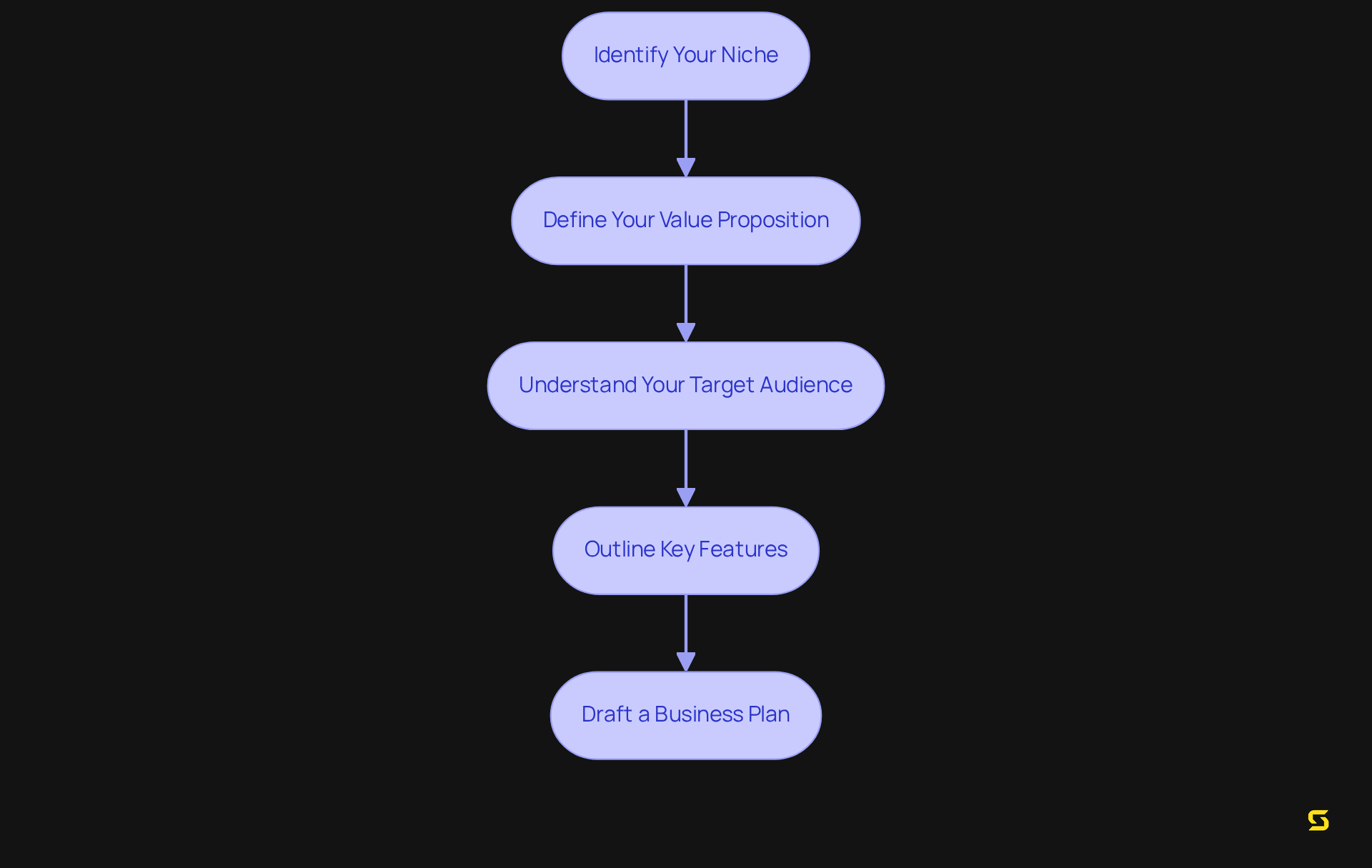
Validate Market Demand for Your Marketplace
To effectively validate market demand for your marketplace, follow these essential steps:
-
Conduct Market Research: Engage potential users through surveys, interviews, and focus groups using platforms like Google Forms or SurveyMonkey. This approach allows you to gather unbiased feedback on their needs, preferences, and willingness to pay, ensuring comprehensive insights.
-
Analyze Competitors: Examine current platforms within your niche. Performing a competitor analysis is crucial to make marketplace decisions that reduce risks and verify demand in the sector before investing in product development. Identify their strengths and weaknesses to uncover opportunities for differentiation and improvement in your offering.
-
Create a Landing Page: Develop a straightforward landing page that outlines your business concept and features. This tool can assist in measuring interest by monitoring sign-ups or inquiries, which can help to make marketplace demand evident.
-
Utilize Social Media: Leverage social media platforms to connect with your target audience. Share your concept and actively encourage feedback, fostering engagement and community involvement. With 2.77 billion global online consumers, confirming demand is more essential than ever in an expanding digital environment.
-
Iterate based on feedback: Use the insights gathered to refine your marketplace concept, ensuring it aligns with actual market demand. As Michael Keenan states, "Demand validation checks if individuals will pay for your offering." This iterative process is crucial for developing a product that resonates with users and meets their needs. Additionally, consider utilizing tools like Shopify Sidekick for market insights and Crowdfunder for pre-orders to enhance your validation efforts.
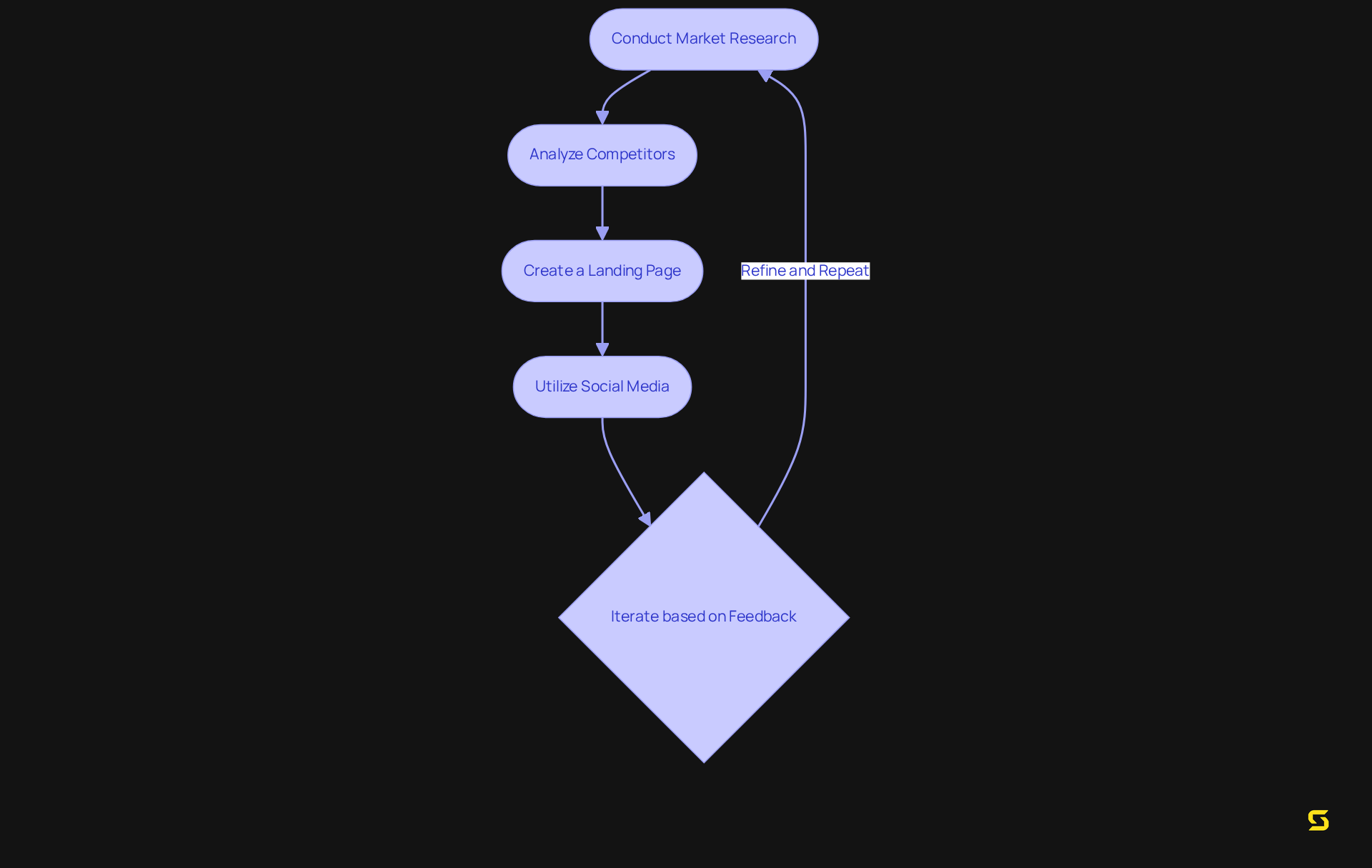
Choose Your Business Model and Marketplace Segment
To effectively choose your business model and marketplace segment, consider the following steps:
-
Identify Business Models: Common models include commission-based, subscription-based, or freemium. Assess which model corresponds most effectively with your marketplace idea and target demographic. Notably, 91% of marketers emphasize lead generation; however, 79% of leads fail to convert. Thus, selecting the appropriate model is essential to create a marketplace that attracts participants and ensures successful lead conversion.
-
To make marketplace decisions, segment your market by focusing on B2B, B2C, or C2C segments. Each segment has distinct dynamics and user expectations. For instance, B2B transactions often involve bulk orders and long-term contracts, while B2C focuses on individual consumer needs, highlighting the importance of understanding your audience.
-
Evaluate Pricing Strategies: Determine how to price your services or products. Consider competitive pricing, value-based pricing, or tiered pricing models. Significantly, only 22% of e-commerce brands employ dynamic pricing, even though 69% of B2B buyers anticipate it. This discrepancy emphasizes the necessity of adjusting pricing strategies to meet consumer demands.
-
Assess Scalability: Ensure your selected model can expand as your platform grows. This might involve considering additional revenue streams to create marketplace opportunities or partnerships. With nearly 30% of all businesses now conducted online and global e-commerce revenue expected to grow at an annual rate of 14.4%, reaching $5.5 trillion by 2027, scalability is essential for long-term success.
-
Document Your Model: Create a detailed description of your business model, including revenue projections and operational costs. This documentation will serve as a roadmap for your business's growth and adaptation to market trends.
By following these steps, SaaS owners can strategically position their platforms for success in an increasingly competitive landscape.
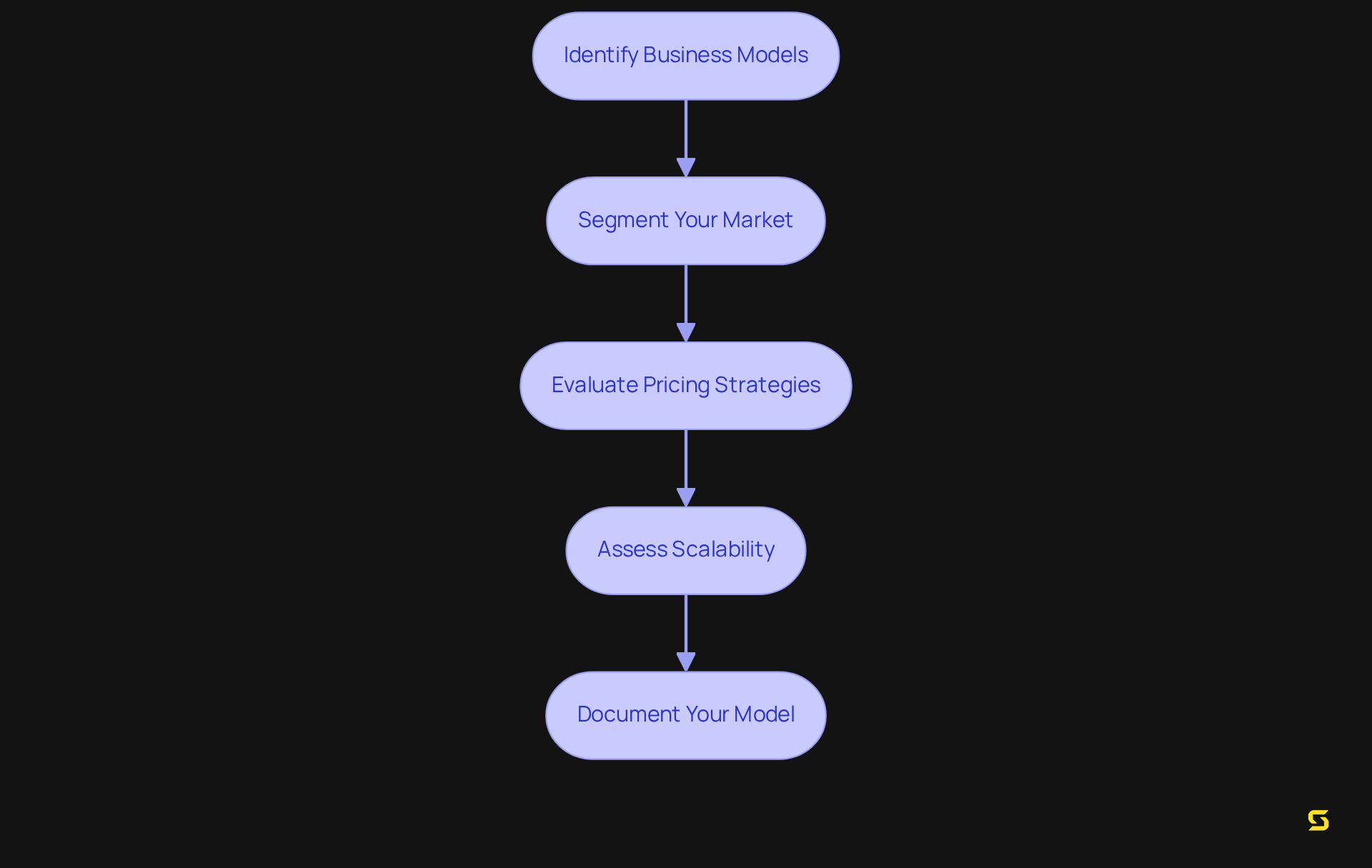
Select the Right Technology and Develop Your MVP
To effectively select the right technology and develop your MVP, follow these essential steps:
-
Choose a Technology Stack: Research and select technologies that align with your platform's requirements. Key considerations include scalability, security, and user-friendliness. Popular stacks such as MERN (MongoDB, Express.js, React, Node.js) and LAMP (Linux, Apache, MySQL, PHP) are widely recognized for their robust capabilities.
-
Define MVP Features: Identify the core functionalities necessary for your MVP. Focus on attributes that address the primary challenges faced by individuals highlighted in previous studies. Key attributes for a platform MVP typically encompass client management, registration, authentication, and seamless transaction facilitation.
-
Develop a prototype by creating wireframes or mockups to visualize the interface and experience for participants in your marketplace. This step is crucial for aligning your vision with audience expectations and ensuring a customer-focused design.
-
Build Your MVP: Collaborate with a skilled development team to construct your MVP. Concentrate on developing a practical and accessible item that enables genuine feedback from individuals, which is essential for subsequent versions. As emphasized in the case study 'SDH's Role in MVP Development,' having a strategic partner can assist in managing the complexities of MVP development and aligning your offering with consumer needs.
-
Test and Iterate: Conduct comprehensive testing of your MVP to identify bugs and gather feedback. This iterative method is vital for enhancing your offering based on real consumer experiences, thereby boosting the chances of market success. Startups utilizing MVPs for testing often see a 30% increase in modifications compared to traditional methods, enhancing their market fit. By starting with an MVP, you can validate demand, refine your product based on feedback, and establish an initial customer base, significantly reducing the risks of overbuilding features.
By following these steps, you can effectively navigate the complexities of MVP development to make marketplace success strategically positioned.
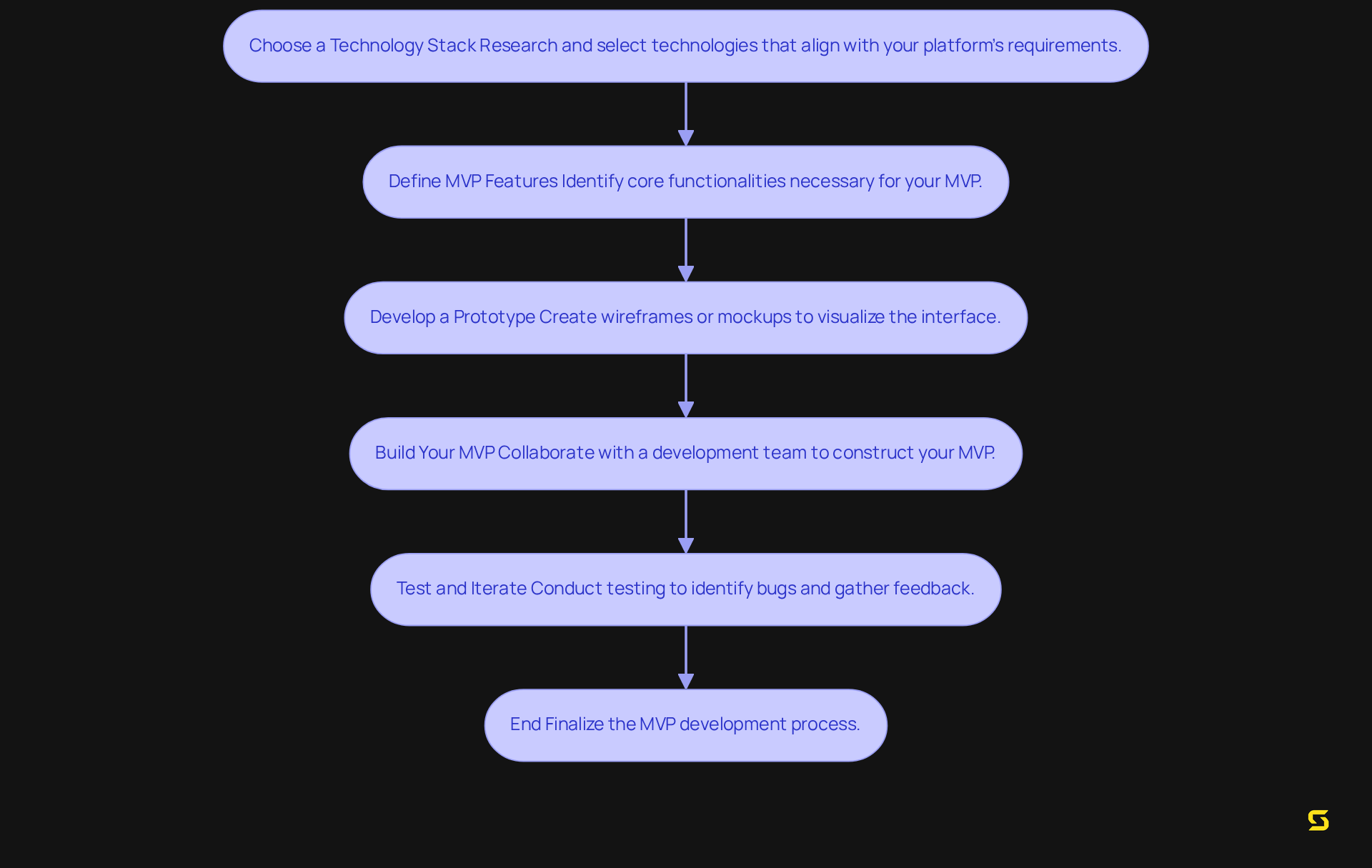
Implement Marketing Strategies to Attract Users
To effectively implement marketing strategies that attract users, consider the following steps:
-
Develop a Marketing Plan: Clearly outline your marketing goals, identify your target audience, and define key messages. Incorporate both online and offline strategies to create a holistic approach that resonates with potential users.
-
Utilize SEO: Optimize your platform for search engines to enhance visibility. Focus on relevant keywords and produce high-quality content. Studies indicate that updating content can lead to a significant increase in traffic, sometimes by as much as 106%. This underscores the importance of a robust SEO strategy.
-
Utilize Social Media: Engage with individuals through social media platforms to promote your marketplace. Leverage posts, targeted ads, and community-building efforts to foster interaction and brand loyalty. With social commerce sales predicted to account for 17% of global ecommerce sales by 2025, establishing a strong social media presence is not just beneficial; it is crucial.
-
Implement Email Marketing: Build a robust email list and send regular updates, promotions, and newsletters to keep subscribers engaged. Personalized email campaigns can significantly enhance customer interactions and drive conversions, making them an essential tool in your marketing arsenal.
-
Incorporate AI Insights: Leverage AI tools to automate marketing tasks and enable hyper-personalization in your campaigns. This approach can enhance audience engagement and improve the effectiveness of your marketing strategies, positioning your brand as a leader in innovation.
-
Explore Gamification: Consider integrating gamification strategies to engage specific demographics, such as Gen Alpha. This approach creates interactive experiences that resonate with younger audiences, enhancing user retention and fostering a deeper connection with your brand.
-
Emphasize Ethical Marketing: As consumers increasingly demand transparency and accountability, ensure your marketing practices reflect ethical standards. This builds trust and aligns with current consumer expectations, positioning your brand as a responsible choice in the marketplace.
-
Monitor and Adjust: Utilize analytics tools to track the performance of your marketing strategies. Be prepared to adapt your approach based on data insights, ensuring that your tactics remain effective in a rapidly evolving digital landscape. As brands increasingly prioritize omnichannel marketing strategies, maintaining flexibility will be key to success.
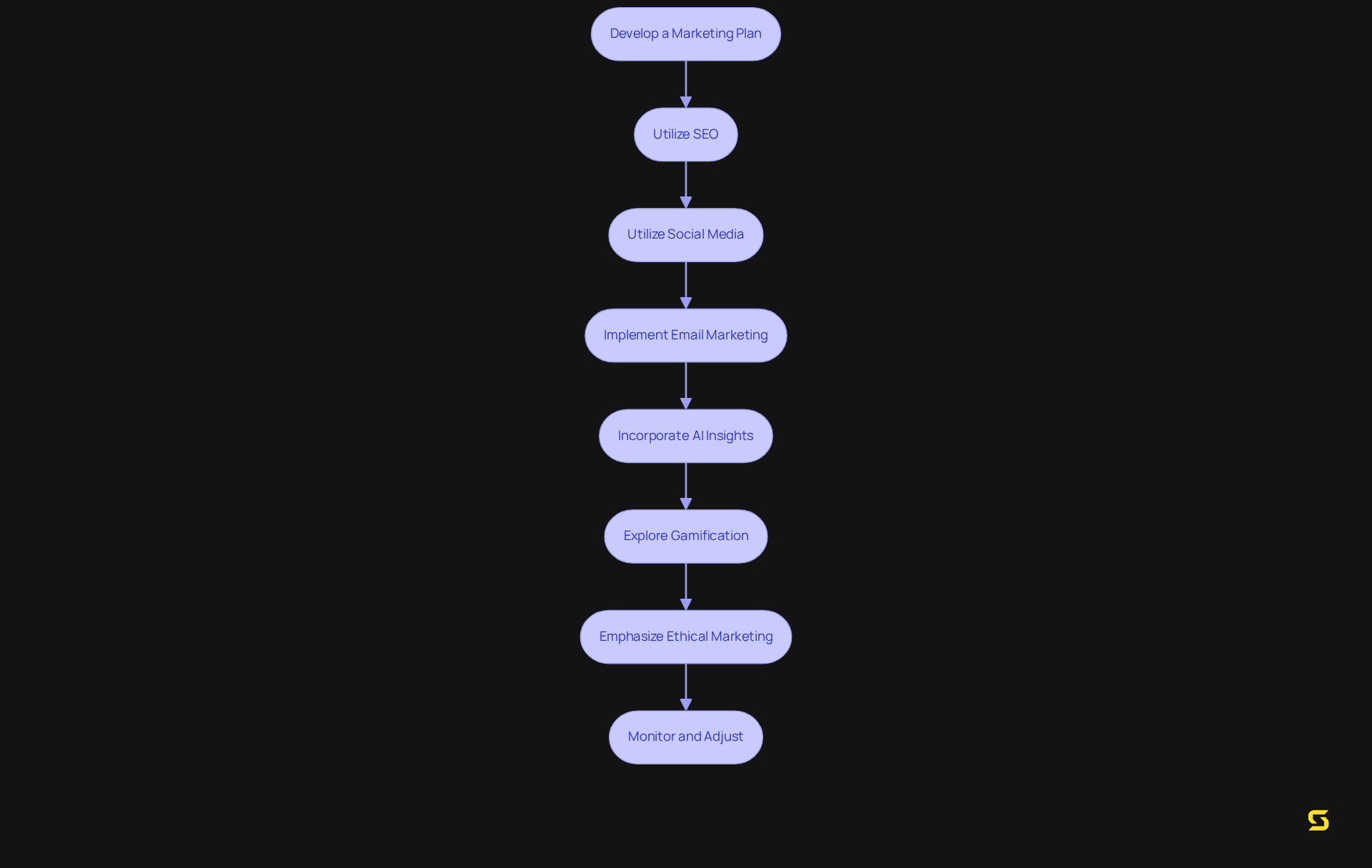
Conclusion
Creating a successful online marketplace demands a strategic approach that includes:
- Defining a clear concept
- Validating market demand
- Selecting an appropriate business model
- Developing a minimum viable product (MVP)
- Implementing effective marketing strategies
By adhering to these five essential steps, SaaS owners can position their platforms for success in a competitive environment, ensuring they meet the needs of their target audience while distinguishing themselves from the competition.
Key insights highlighted in this article emphasize the critical nature of:
- Thorough market research to identify niches and validate demand
- Selecting the right technology stack and business model that aligns with user expectations
- Crafting a robust marketing plan
- Leveraging social media
- Utilizing SEO strategies
Ultimately, the journey to marketplace success is an iterative process that necessitates ongoing refinement and adaptation. By embracing these strategies and remaining responsive to market feedback, SaaS owners can not only establish a thriving online marketplace but also cultivate a loyal customer base that drives long-term growth. Engaging in these practices enhances the likelihood of success and contributes to a more personalized and satisfying shopping experience for consumers, paving the way for a prosperous future in the e-commerce landscape.
Frequently Asked Questions
How do I define my online marketplace concept?
To define your online marketplace concept, identify a niche by researching various industries to find a market gap. Define your value proposition, understand your target audience by creating customer personas, outline key features for your platform, and draft a comprehensive business plan summarizing your goals and strategies.
What is the importance of identifying a niche for my marketplace?
Identifying a niche is crucial as it helps pinpoint a specific market gap your platform can fill, allowing you to cater to a targeted audience and differentiate your marketplace from competitors.
How can I understand my target audience?
You can understand your target audience by creating customer personas that represent your ideal clients, considering their demographics, preferences, and pain points to tailor your offerings effectively.
What key features should I consider for my online marketplace?
Essential features to consider include user reviews, secure payment processing, and a mobile application to enhance accessibility for users.
Why is it important to draft a business plan for my marketplace?
A business plan is important as it summarizes your marketplace concept, outlines your goals, strategies, and financial projections, serving as a guide for your commercial development.
How can I validate market demand for my marketplace?
To validate market demand, conduct market research through surveys and interviews, analyze competitors, create a landing page to measure interest, utilize social media for feedback, and iterate your concept based on insights gathered.
What methods can I use to gather feedback from potential users?
You can gather feedback through surveys, interviews, and focus groups using platforms like Google Forms or SurveyMonkey to gain unbiased insights into user needs and preferences.
How can I analyze my competitors effectively?
Analyze competitors by examining current platforms within your niche, identifying their strengths and weaknesses, and uncovering opportunities for differentiation and improvement in your offering.
What is the purpose of creating a landing page for my marketplace?
A landing page serves to outline your business concept and features, helping to measure interest by monitoring sign-ups or inquiries, which can indicate market demand.
How can social media help in validating my marketplace demand?
Social media can help connect with your target audience, share your concept, encourage feedback, and foster engagement, all of which are essential for confirming demand in an expanding digital environment.





